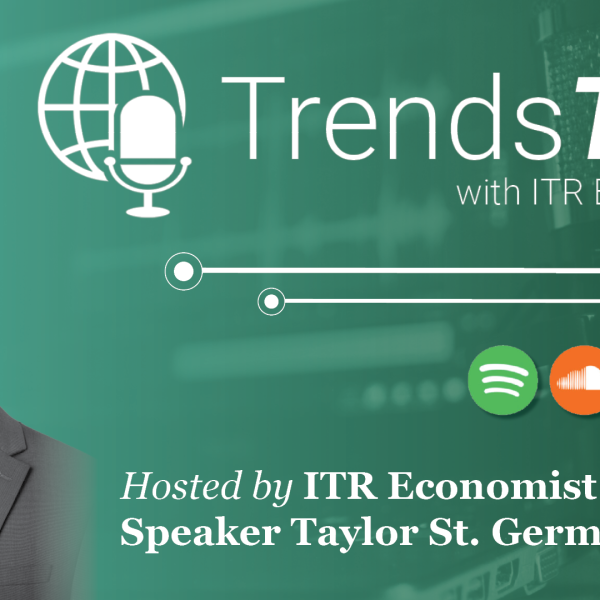- Mon - Fri: 8:30 - 5:00
- +1-603-796-2500
- ITR@itreconomics.com
May 19, 2023
- Home
- portfolio
- TrendsTalk
- May 19, 2023
with brian beaulieu
INTEREST RATES AND THE LABOR MARKET
What trends are we currently seeing in the labor market, and how might they impact interest rates going forward? Tune in to the latest episode of TrendsTalk with ITR Economics CEO Brian Beaulieu to learn more!
The below transcript is a literal translation of the podcast audio that has been machine generated by Rev.
Hi, I’m Brian Beaulieu from ITR Economics. Thank you for joining me for this edition of TrendsTalk.
Two, three weeks ago, Lauren Saidel-Baker of our team talked about the ongoing type labor market, how EIN applications were continuing to rise.
I’m coming at employment/unemployment from a slightly different angle. The Federal Reserve keeps talking about they need to see some loosening in the labor market before they can think about not raising interest rates or lowering interest rates. And I get that they’re pointing in on that, but it’s irrational from our perspective because at this point in the cycle you won’t expect to see employment deteriorating or weakening significantly or even substantially, and you wouldn’t expect to see unemployment going up yet. See, GDP is still going up. US industrial production is still going up. So employment lags those two trends.
So until they go down we’re going to see tight labor conditions. So by definition, they’re going to be looking for a weakness in the numbers from a recession that they will have created because they pushed interest rates up too high.
There’re some early indications that the labor market is going to be softening. One is the fact that job openings has come down significantly. The other is that the quit rate is also coming down. Those are early precursors of unemployment slowing down, if not even declining, and we think it will in 2024.
But first, you’re going to see the unemployment rate go up and at 3.1%, that’s the lowest unemployment rate we’ve seen since 1969. This is one whale of a low unemployment rate, so I don’t think it’s going to take that long to get it back up. As a matter of fact, at least in 1969, it bounced up pretty quickly, but back then we had a draft going on taking a lot of young people out of the labor force, maybe exacerbating the situation.
Right now that isn’t the case, so this is more demand-driven, I think, than the supply constraint in terms of artificially constrained anyways.
Look for late this year employment is already slowing and its rate of rises it’s going to continue to slow, but it won’t be obvious to people and probably not to the Federal Reserve until one Q 2024, and that’s when we’re most likely going to see the employment trend slowing down, bending down, and the unemployment rate go up.
Until then Federal Reserve is going to have to go whistling beyond the grave, and I hope they just have a little bit of patience along the way.
Thanks for joining us for this edition of TrendsTalk. See you next time.





